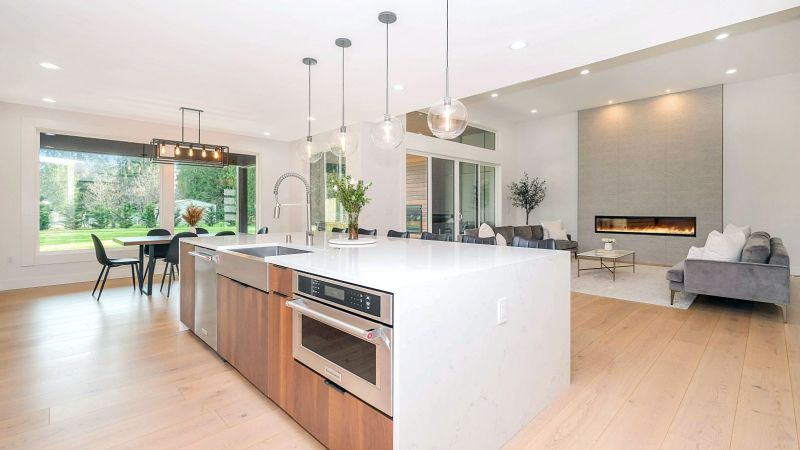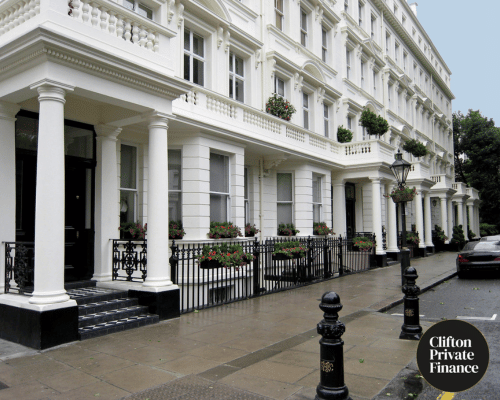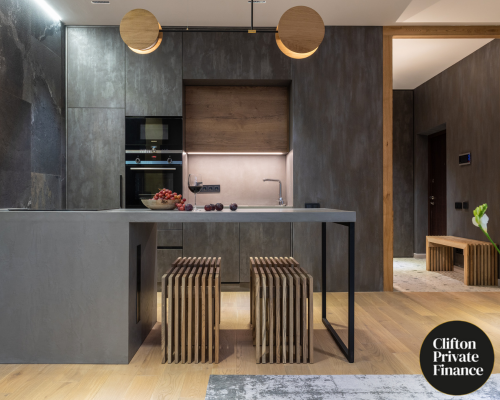Categories
How to Switch to a Buy to Let Mortgage

Switching to a buy to let from a residential mortgage can be daunting, especially if you’re unsure if you’ll pay any early repayment charges or mortgage set-up fees.
But if it can unlock the rental potential of your current residential property and help fund your ambitions to move or go travelling, it’s well worth the costs.
There are a few different ways to switch to a buy to let mortgage from a residential one and some key points. This guide will cover everything you need to know about the process and how to go about it.
Find the Perfect Buy-to-Let Mortgage
In This Guide
When is a Good Time to Switch to a Buy to Let Mortgage?
What Are My Options for Switching to a Buy to Let Mortgage?
Can I Just Rent Out My Home Without Telling My Mortgage Provider?
Should I Convert My Existing Mortgage to a Buy to Let Mortgage?
Should I Switch My Mortgage to a Buy to Let Mortgage?
What Are the Costs of Remortgaging to a Buy to Let?
Can I Let Out My Property if I Am Moving Abroad?
How to Switch to a Buy to Let Mortgage
Find the Perfect Buy-to-Let Mortgage
When is a Good Time to Switch to a Buy to Let Mortgage?
If you’re thinking of switching from a residential mortgage to a buy to let mortgage, you’re probably in one of the following situations:
- You’re moving into a new property with a partner and retaining your own
- You’re moving to a new city for work and won’t be using your home for several months
- You’re going travelling and won’t be living in the property for some time
- You’re buying a new home to live in but want to retain your current property for a rental income source
- You’re moving abroad but want to maintain a UK base and rent it out

March 2024 Buy to Let Market Update
- Before 2023, the stress rate was around 4%, and landlords could borrow significantly more. For instance, about a year ago, a basic rate taxpayer could borrow around £309k for a property based on the average UK rent of circa £1,300.
- At 75% Loan to Value, that could buy roughly a £400k property, which you would expect to comfortably provide £1,300 in rental income. So it made sense, and the maths added up.
- The BTL market faced challenges in 2023, with landlords finding it difficult to borrow due to stringent stress testing measures. However, stress testing has eased up in recent months, and there is growing confidence in the buy-to-let market in 2024.
Did You Know?
Generally, 5-year fixes are typically the cheapest deals available for buy-to-let mortgages. The Prudential Regulation Authority allows mortgage providers to apply a lower stress test if the mortgage term is over five years.
Because of this, you may find a rare 2-year fix or tracker mortgage that seems more suitable, but in most cases, a five-year fix will work out as a more affordable option, purely because of the more lenient stress testing criteria applicable.
What Do the Experts Say?
Alex Morris, Private Client Adviser
What is Stress Testing in BTL Mortgages?
Stress testing is a method used by lenders to assess a landlord’s ability to cover mortgage payments under adverse conditions, ensuring that rental income is sufficient even in less favourable scenarios.
Find the Perfect Buy-to-Let Mortgage
The specific rates mentioned (from 4% to 10.5%) refer to the hypothetical adverse conditions under which the stress tests are conducted. Higher stress rates make it harder to pass the test, thus reducing borrowing capacity.
See the latest market news below.
Where Are the Most Affordable Places in the UK to Buy a Home?
House prices are rising, but not as rapidly as they were before 2022.
In 2024, we did see a modest rise in house prices, but since the budget, this has come down slightly. The Bank of England base rate has dropped, but mortgage deals don’t seem to be moving in response to the Autumn Budget, which has since been widely considered inflationary.
As the housing market begins to recover from the past four years of economic turbulence, there seems to be a case of push and pull between house prices and interest rates restricting affordability.
Limited affordability has caused a visible divide between the UK’s most and least affordable housing. And unfortunately, in more expensive areas, first time buyers aren’t getting to enjoy much of a drop in house prices because the difference is made up by high interest rates and less favourable mortgage deals.
Mortgage rates have come down slightly from their 15-year high, and while the housing market does seem to be on the mend, it’s still not the easiest time to buy property for first-time buyers and investors alike.
For buy to let investors, regulations have gotten stricter since 2022, and high mortgage rates have thinned profit margins, making owning a standard buy to let a trickier affair than a decade ago.
While house prices have dropped slightly due to lack of affordability across London and the rest of the South, this isn't the case in other regions.
But this isn't the case everywhere in the UK. The North of England has seen entirely different purchasing behaviour to the South since the early 2000s. In select areas, particularly Yorkshire, North Lincolnshire and Durham, you can still easily buy a property for under £100,000.
Due to affordable housing and cheaper living costs in these areas, most of Northern England and Scotland have been resistant to the housing slump that the rest of the UK has experienced in response to high mortgage rates. The property market in these regions has remained robust and has seen growth throughout 2024.
There's certainly hope, both for property investors and those looking to get on the housing ladder. If you're looking to invest in a buy to let in 2024, it may be worth looking in affordable areas with a consistent rental demand, such as university towns or areas close to large employers. Property hotspots like these are still reaping generous rental yields while the rest of the country is seeing slow growth.
For first-time buyers, house prices coming down significantly could make it much easier for them to get on the housing ladder, but in many cases, house prices going up is beneficial for those using equity in their homes to make another purchase.
See similar: Best Place to Invest in Property 2024 Revealed
What Are My Options for Switching to a Buy to Let Mortgage?
There are two main options you have when it comes to swapping to a buy to let mortgage:
- Getting ‘consent to let’ from your current residential mortgage provider.
- Remortgaging to a new buy to let mortgage product with your existing provider or a new lender.
Find the Perfect Buy-to-Let Mortgage
We will go over the differences in more detail next, but generally, a consent-to-let agreement is more relevant for shorter-term let arrangements than long-term buy to let plans.
Related: How to Convert a Buy to Let to an HMO
Can I Just Rent Out My Home Without Telling My Mortgage Provider?
In short, no.
There are different regulations for residential mortgages and buy to lets.
This means that if you let out your home without your mortgage provider's knowledge, you could be breaching the terms and conditions of your loan.
If you speak to your current provider about renting out your home, they might let you do it without requiring you to remortgage.
Could I Get Consent From My Current Mortgage Provider to Rent Out My Home?
Yes, depending on your exact plans.
Getting consent from your current mortgage provider to let out your home can be the simplest and most cost-effective way of getting the right to rent out a property you own.
You’ll need to have a conversation with your current lender about what you’re planning to do and for how long:
- Usually, the maximum duration you can let out your home for is between 12 and 24 months to qualify for consent to let
- You could be rejected if your projected rental income is too low to cover your mortgage and other monthly outgoings.
- You could also be rejected if your mortgage lender suspects that your original intention was to rent out your property when you secured your residential mortgage to secure lower rates.
Read blog: Landlords Are Improving EPC on Rental Properties - Here's Why

Find the Perfect Buy-to-Let Mortgage
Can I Swap My Residential Mortgage For a Buy to Let Mortgage?
If you cannot convert your existing mortgage, remortgaging to a buy to let product instead may be your only option.
You can remortgage with your current mortgage provider or go with a new lender. You may get a loyalty discount from using the same mortgage provider, but check what’s available to compare to the rest of the market.
If in doubt, speak to a mortgage broker. We have saved our clients thousands of pounds on interest payments simply by switching to a new lender for a remortgage instead of accepting their current provider’s mortgage rates.
You’ll need to pass your lender’s buy to let affordability criteria to ensure that you can keep up with your mortgage payments.
To qualify for a buy to let mortgage, your projected rental income will need to cover approximately 145% of the monthly interest repayments from your mortgage.
You are also likely to need at least a 25% deposit for a rental deposit - more than you’ll typically need to put down for a residential mortgage.
Remortgaging could also be an excellent opportunity to release some equity from your main home to put towards a new property or another asset.
How many buy to let mortgage products are out there?
Moneyfacts recently reported that there are now approximately 2,200 buy to let mortgage products on the market compared to just 1,311 in February last year, marking a 65% increase. It's undoubtedly a prosperous area of the mortgage market at the moment.
What Are the Costs of Remortgaging to a Buy to Let?
It can be challenging to gauge the full range of costs you’ll incur by remortgaging your property to a buy to let, simply because there are some charges you might not expect to pay.
Here’s a list of all the costs you might need to pay when switching to a buy to let mortgage:
Early Repayment Charges (ERCs) on your existing mortgage
If you’re currently on a fixed-rate mortgage deal, switching to a BTL mortgage before the end of your fixed term of interest could cost you roughly 1-5% of your outstanding loan amount in ERCs.
Set up costs for a new buy to let mortgage
These could range from £500 to £1,999 depending on the lender you go with, the interest rate you pay, and the complexity of your case.
And don’t forget about:
- Legal fees and valuation fees
- Property maintenance and agents’ fees
- Income tax on your rental profits
You may also need to consider whether you want to take out a fixed rate or tracker mortgage product. We have a guide on deciding: Should You Get a Tracker or Fixed Rate Mortgage in 2024?
Can I Let Out My UK Property if I Am Moving Abroad?
Yes, you can.
However, you will likely need to remortgage completely if you intend to move abroad, and you may have a smaller pool of lenders to choose from.
And you’ll need to pay UK income tax under the Non-Resident Landlords (NRL) Scheme for the rent you earn from your UK buy to let property.
We recommend speaking to a mortgage adviser if you are becoming an expat and renting out your UK home in the near future on a buy to let mortgage.

How to Switch to a Buy to Let Mortgage
When it comes to finding the best buy to let mortgage deal, it's always best to seek advice from an independent mortgage broker. Our team of specialist buy to let mortgage brokers have relationships with banks and specialist private lenders who offer competitive BTL mortgage products.
We have access to market-leading rates and bespoke finance deals, as well as experience arranging finance for unique property portfolios.
Do you need to move faster to secure a new property or to buy your dream home?
A bridging loan puts you in the position of a cash buyer, with short-term property finance available in as little as a few days. It’s then repaid when an ongoing sale completes, or when you secure a standard mortgage in its place.
Related: How to Remortgage a Buy to Let Property
To see what we can do for you, call us at 0117 205 4831 or book a free consultation below.









